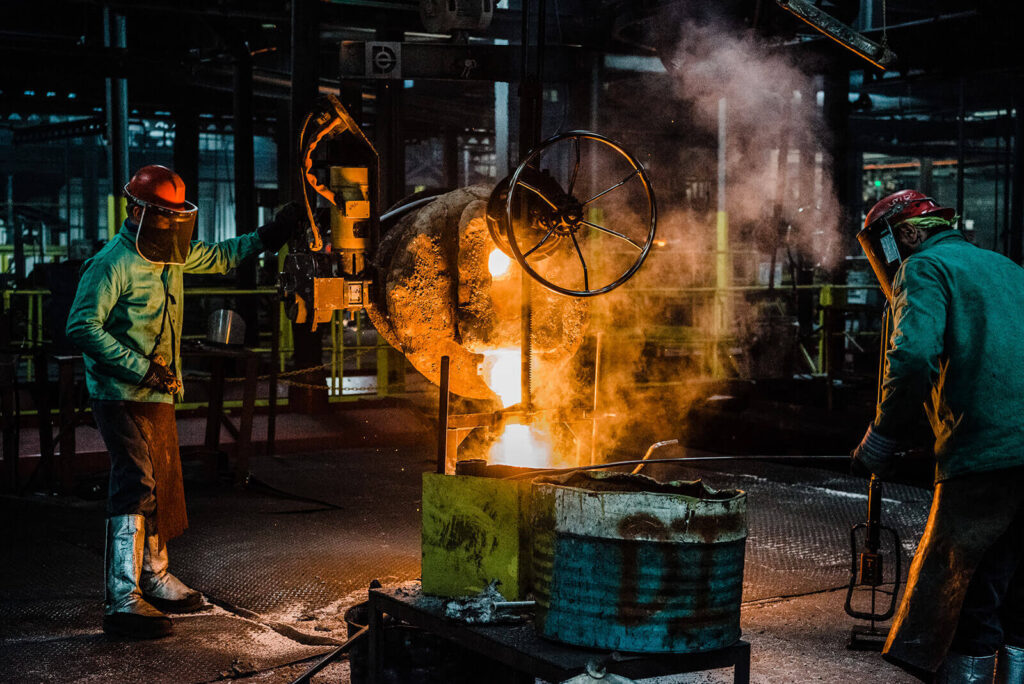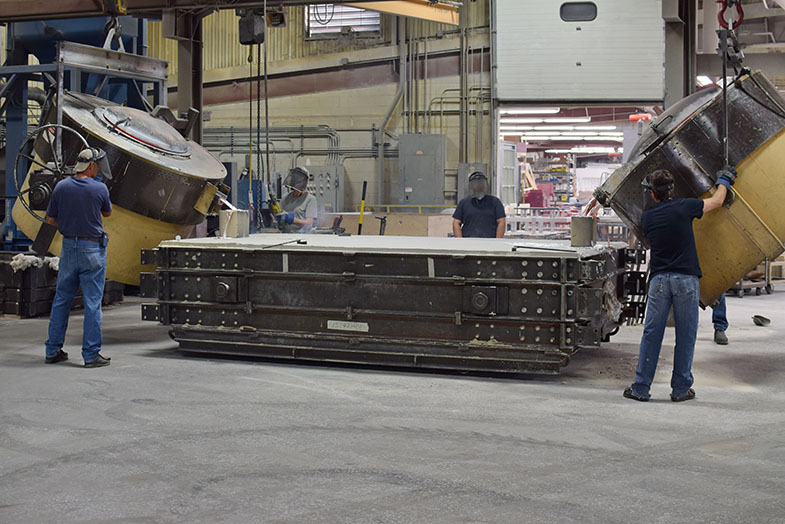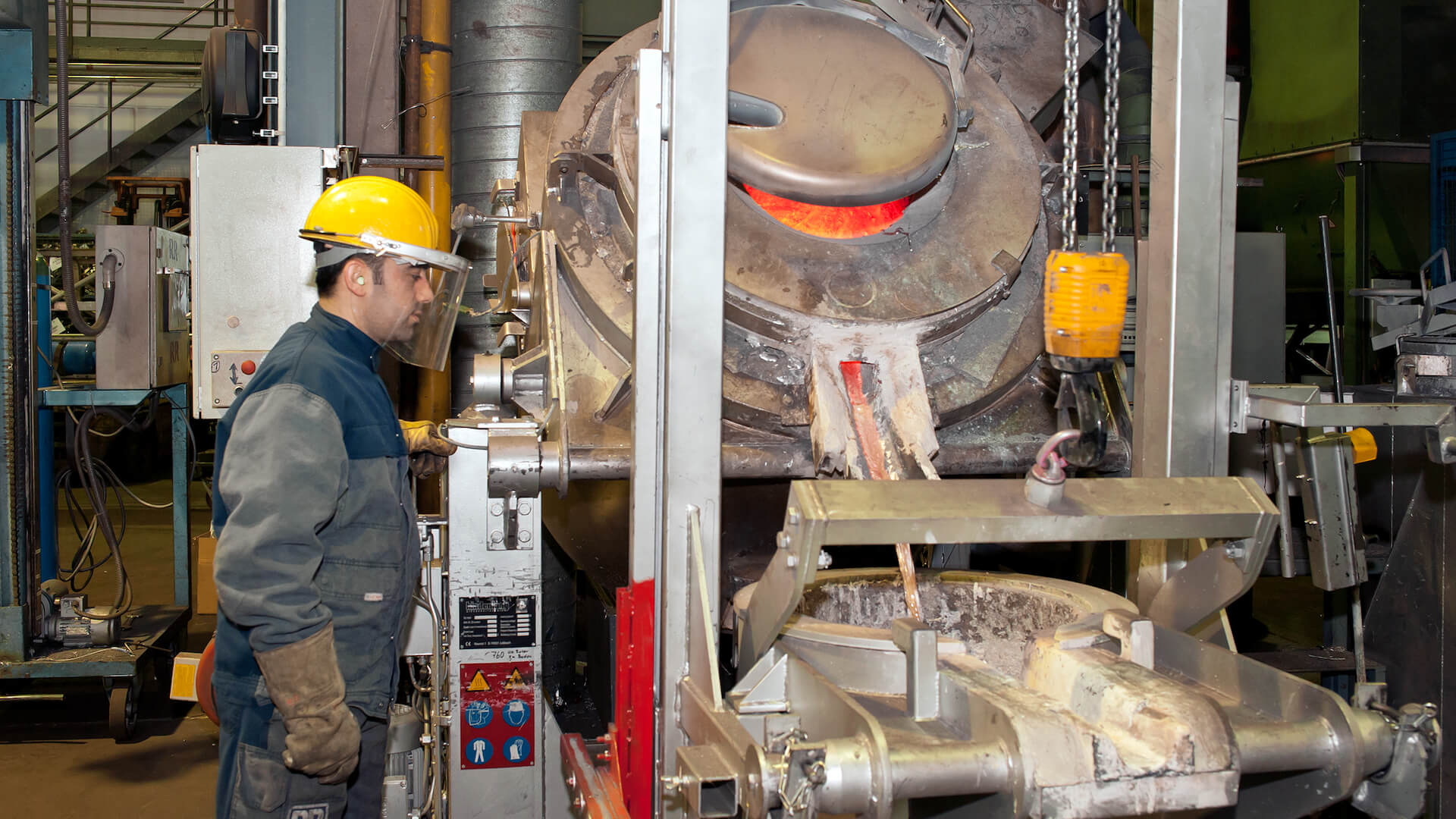The next era of Aluminum Foundry in green engineering
Discovering the Value of Aluminum Foundry in Sustainable Engineering Practices
Aluminum foundries are progressively identified for their vital duty in lasting engineering. By recycling aluminum and using ingenious modern technologies, they add to source preservation and reduced emissions. This practice fosters a circular economic situation, enhancing product high quality while lessening ecological influence. Nonetheless, the trip in the direction of sustainability in steel casting is laden with difficulties and chances that call for more expedition. What lies ahead for aluminum foundries in the mission for a greener future?
The Function of Aluminum Foundries in Source Conservation
Aluminum foundries play an essential duty in resource conservation by successfully reusing light weight aluminum materials. These facilities contribute in changing scrap light weight aluminum right into top notch items, consequently minimizing the demand for new light weight aluminum removal. The process entails thawing down used light weight aluminum products, which needs substantially much less energy than producing light weight aluminum from raw bauxite ore. By utilizing existing products, foundries assist reduce greenhouse gas emissions associated with mining and refining procedures.
Aluminum foundries contribute to lose decrease by diverting scrap from garbage dumps, promoting a more lasting approach to resource monitoring. They commonly work together with markets to gather post-consumer and post-industrial aluminum waste, boosting the general recycling infrastructure. This method not only saves natural deposits however also supports the economy by developing jobs and promoting innovation in sustainable design practices. With these initiatives, light weight aluminum foundries exemplify a dedication to ecological stewardship and resource effectiveness in production.
Recycling and Repurposing: A Circular Economic Situation Approach
The idea of a round economic situation is progressively obtaining traction in different sectors, including aluminum foundries. This method stresses the importance of recycling and repurposing products to decrease waste and optimize resource use. In light weight aluminum foundries, reusing involves recovering scrap light weight aluminum from manufacturing procedures and end-of-life products, considerably reducing the requirement for virgin materials. This not just preserves natural deposits however additionally decreases power consumption associated with aluminum production.
Repurposing, on the other hand, includes changing thrown out light weight aluminum items right into new, practical things, thereby expanding their life process. By embracing these techniques, aluminum foundries add to a sustainable production community that prioritizes environmental duty. The combination of reusing and repurposing within the aluminum industry aligns with more comprehensive sustainability objectives, driving technology and boosting the financial feasibility of circular economy concepts (Aluminum Foundry). Inevitably, this technique promotes resilience within the sector while minimizing its environmental footprint
Cutting-edge Technologies Changing Aluminum Casting
Innovative modern technologies are improving the aluminum spreading market by introducing advanced molding strategies that improve precision and performance. Furthermore, the development of environmentally friendly alloys is promoting sustainability while preserving performance criteria. Automation in casting processes further streamlines manufacturing, minimizing waste and energy consumption.
Advanced Molding Techniques

Eco-Friendly Alloy Growth
As the need for sustainable methods in producing grows, the development of environment-friendly light weight aluminum alloys has actually emerged as an essential emphasis within the light weight aluminum spreading market. These ingenious alloys aim to decrease environmental effect while preserving exceptional performance attributes. Researchers are checking out the consolidation of recycled products and non-toxic elements, which not only diminish the carbon impact however likewise boost resource efficiency. Advanced methods, such as the usage of bio-based additives, are being investigated to boost alloy homes without compromising sustainability. In addition, collaborations in between academia and sector are promoting the production of alloys tailored for specific applications, making sure that environment-friendly alternatives satisfy the rigorous needs of modern design. This dedication to sustainability settings the light weight aluminum casting sector as a leader in responsible production practices.
Automation in Casting Procedures
While the aluminum casting sector embraces sustainability, automation in casting procedures is at the same time changing production performance and quality. Advanced technologies such as robotic arms, computer system numerical control (CNC) equipments, and man-made knowledge are improving procedures, minimizing labor expenses, and minimizing human error. These technologies allow exact control over spreading parameters, guaranteeing regular item quality and decreasing product waste. In addition, automated systems can monitor real-time information, permitting prompt adjustments to enhance efficiency. As an outcome, suppliers can enhance their sustainability efforts by improving resource usage and reducing power usage. The assimilation of automation not just fulfills the expanding need for premium light weight aluminum elements yet likewise aligns with green practices, marking a significant development in the aluminum foundry sector.
Reducing Carbon Footprints Via Lasting Practices
A substantial decrease in carbon footprints can be accomplished through the implementation of sustainable techniques in light weight aluminum foundries. By taking on energy-efficient modern technologies, foundries can decrease power usage, consequently reducing greenhouse gas emissions. Additionally, Learn More Here the assimilation of recycled light weight aluminum considerably minimizes the need for raw material removal, which is resource-intensive and adds to environmental degradation.
Implementing innovative melting methods, such as induction melting, can likewise enhance performance and lower discharges. Additionally, enhancing the casting procedure with automation and monitoring can minimize waste and energy use.

The Effect of Aluminum Foundries on Various Industries
Aluminum foundries play a considerable function across various markets, supplying lightweight and long lasting materials that boost product performance and sustainability. In the automotive industry, light weight aluminum spreadings add to fuel effectiveness by minimizing lorry weight, eventually resulting in lower emissions. The aerospace industry advantages from light weight aluminum's strength-to-weight proportion, making it possible for the manufacturing of extra reliable aircraft styles. In building and construction, light weight aluminum parts supply deterioration resistance and long life, making structures extra lasting with time. Moreover, the electronic devices sector uses aluminum for its excellent thermal conductivity, which is vital for warm dissipation in gadgets. Furthermore, aluminum foundries sustain the production of durable goods, providing cosmetically pleasing and practical products. As industries significantly prioritize sustainability, the role of light weight aluminum foundries comes to be a lot more vital, guaranteeing that materials not just satisfy performance criteria however also straighten with environmental goals. Subsequently, the effect of aluminum foundries prolongs across numerous industries, driving innovation and advertising sustainable techniques.
Difficulties and Opportunities in Sustainable Steel Casting
As markets endeavor for sustainability, the obstacles and chances in lasting metal spreading become progressively prominent. One considerable obstacle is the environmental influence of traditional spreading procedures, which typically entail high energy usage and exhausts. Additionally, the need for knowledgeable labor in sustainable methods postures difficulties for lots of foundries. Chances are plentiful with developments in modern technology, such as the integration of energy-efficient methods and the usage of recycled products. Stressing the circular economic climate, foundries can lower waste and reduced costs while boosting item quality. Collaboration among stakeholders, including vendors and consumers, can bring about innovative methods that promote sustainability. In addition, governing stress encourage foundries to adopt greener practices, transforming challenges into opportunities for development. By dealing with these difficulties, the steel casting market can position itself as a leader in sustainable design, inevitably adding to a much more ecologically accountable future.
Future Patterns in Aluminum Foundry Practices for Sustainability

Cutting-edge Recycling Techniques
While the demand for lasting techniques continues to increase, cutting-edge recycling methods are emerging as critical remedies within the aluminum foundry industry. Advanced approaches such as closed-loop recycling are obtaining traction, enabling the repurposing of scrap aluminum directly back right into the manufacturing procedure. This strategy not only minimizes waste however likewise minimizes the carbon impact connected with light weight aluminum manufacturing. Additionally, the development of sophisticated sorting innovations improves the performance of recycling operations, guaranteeing top notch feedstock for foundries. Strategies like hydrometallurgical reusing more maximize source healing, making it possible for the removal of useful products from complicated aluminum alloys. As these developments develop, they significantly contribute to a more sustainable light weight aluminum foundry sector, straightening with international ecological goals.
Energy-Efficient Casting Methods
Innovative recycling techniques lead the means for innovations in energy-efficient spreading approaches within the light weight aluminum foundry industry. These approaches concentrate on minimizing energy consumption and decreasing waste throughout the spreading process. Techniques such as die spreading and investment casting are being improved to improve thermal efficiency and reduce cycle times. In addition, the combination of smart modern technologies and automation enables real-time monitoring and optimization of power use. Researchers are likewise discovering different products and ingredients that can further boost energy efficiency (Aluminum Foundry). The change towards lasting practices is not just regulative; it you can look here mirrors a growing market need for greener products. As energy-efficient spreading methods advance, they guarantee to significantly lower the carbon footprint of light weight aluminum production while keeping quality and efficiency standards
Often Asked Questions
What Are the Environmental Advantages of Aluminum Foundries Compared to Various Other Metals?
Aluminum foundries use significant environmental advantages, including reduced power consumption, lowered greenhouse gas emissions, and recyclability. Contrasted to other steels, aluminum's light-weight nature enhances fuel effectiveness in transportation, additional adding to sustainability in various markets.
Just How Do Aluminum Foundries Contribute to Local Economic Situations and Job Development?
Aluminum foundries play a crucial duty in local economic climates by creating job opportunities and supporting supplementary sectors. Their operations stimulate economic growth, improve workforce abilities, and foster area growth through investment in local facilities and services.
What Precaution Are Applied in Aluminum Foundry Operations?
Safety and security steps in aluminum factory procedures include personal protective tools, ventilation systems to minimize exposure to fumes, routine devices maintenance, security training for workers, and stringent adherence to market regulations to reduce risks and assurance worker safety.
How Can Consumers Assistance Lasting Practices in Aluminum Manufacturing?
Consumers can support sustainable methods in aluminum production by picking items made from recycled light weight aluminum, Homepage supporting for environmentally friendly sourcing, and supporting companies committed to reducing their carbon footprint and carrying out responsible manufacturing procedures.
What Accreditations Should Aluminum Foundries Go After for Sustainability Acknowledgment?
Aluminum foundries must seek certifications such as ISO 14001 for environmental management, LEED for eco-friendly structure, and the Aluminum Stewardship Effort criteria to obtain acknowledgment for their dedication to sustainability and accountable manufacturing methods.